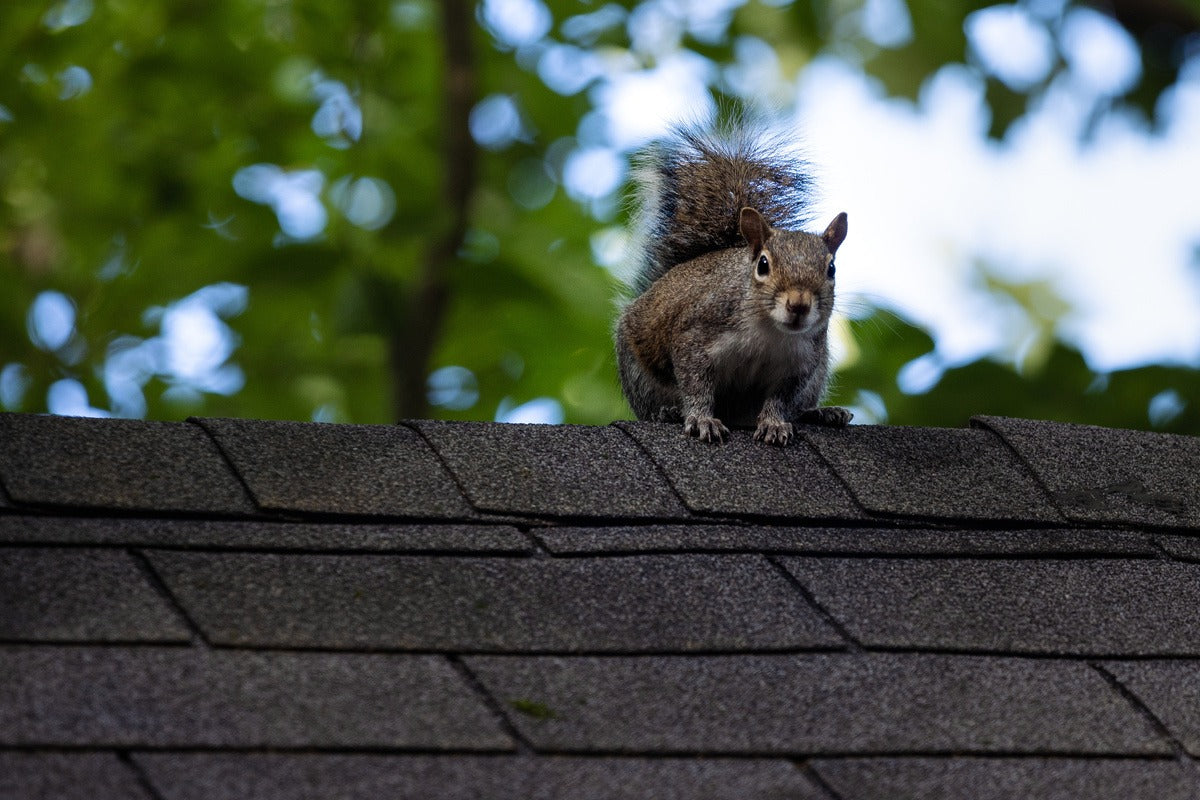5 Common Places Squirrels Nest In and Around Homes

As tree-climbing rodents, squirrels have easy access to some of your home's most vulnerable features. Although these nocturnal animals often live in small, tree-borne nests made of twigs, leaves, and other materials, they're just as happy to set up camp in and around your home. They actively seek secluded spaces that provide protection from natural predators. Unfortunately, once they gain entry, they can cause many structural and aesthetic damages.
Watch the video below or keep reading to find five common nesting places for squirrels.
1. HVAC Components
Squirrels might set up camp in your outdoor heat pump or AC condenser unit. Once here, like all rodents, they'll leave food, feces, and other detritus behind, and they may even chew through wiring.
It's also possible to have a squirrel problem in your HVAC air ducts. Long, complex networks of ducting provide shelter, protection, and warmth. Not only will squirrels in your ductwork greatly diminish your indoor air quality, but their impact on HVAC functioning could result in excess humidity, foul odors during HVAC operation, and increased home energy bills.
2. Attics
Attics are a prime target for squirrels given that these tree-climbing animals can mount roofs and make their way in with ease. Low-hanging utility lines and nearby utility poles also provide easy access. You can avoid squirrel problems in your attic by regularly limbing your trees and installing preventative pest control solutions.
3. Range Hood Vents
Your range hood vent is one of several rooftop protrusions. Surrounded by flashing, it's also among your roof's weakest points. In winter, squirrels might congregate around this feature to take advantage of escaping heat. Like attics, range hood vents are often accessed via low-hanging tree branches and nearby utility lines and poles.
4. Dryer Vents
Dryer vents provide shelter, protection, and warmth. Unfortunately, if any rodents enter your dryer vent, they can become trapped and die or damage the vent entirely. Trapped carcasses can leave your home rancid. Moreover, the resulting blockage will greatly increase your risk of dangerous dryer vent fires.
5. Dormer Gaps and Soffits
Squirrels can additionally get into your home by chewing their way through materials behind your gutters, just where your roof's dormers and the roofline meet. Soffits are another prime target. Although you can plug squirrel holes to stop the problem, it's best to make sure that all rodents are out first.
Prevention is always cheaper than treatment, especially when it comes to protecting your home from squirrels and other wildlife. Taking good care of your roof and maintaining your trees is an excellent start. However, you should also take advantage of the wildlife control products from Critter Guard. We offer effective deterrents for rodents seeking roof access via low-hanging utility lines and nearby utility poles. To shop our outstanding selection of products, visit our online store or contact us today!
- Choosing a selection results in a full page refresh.


